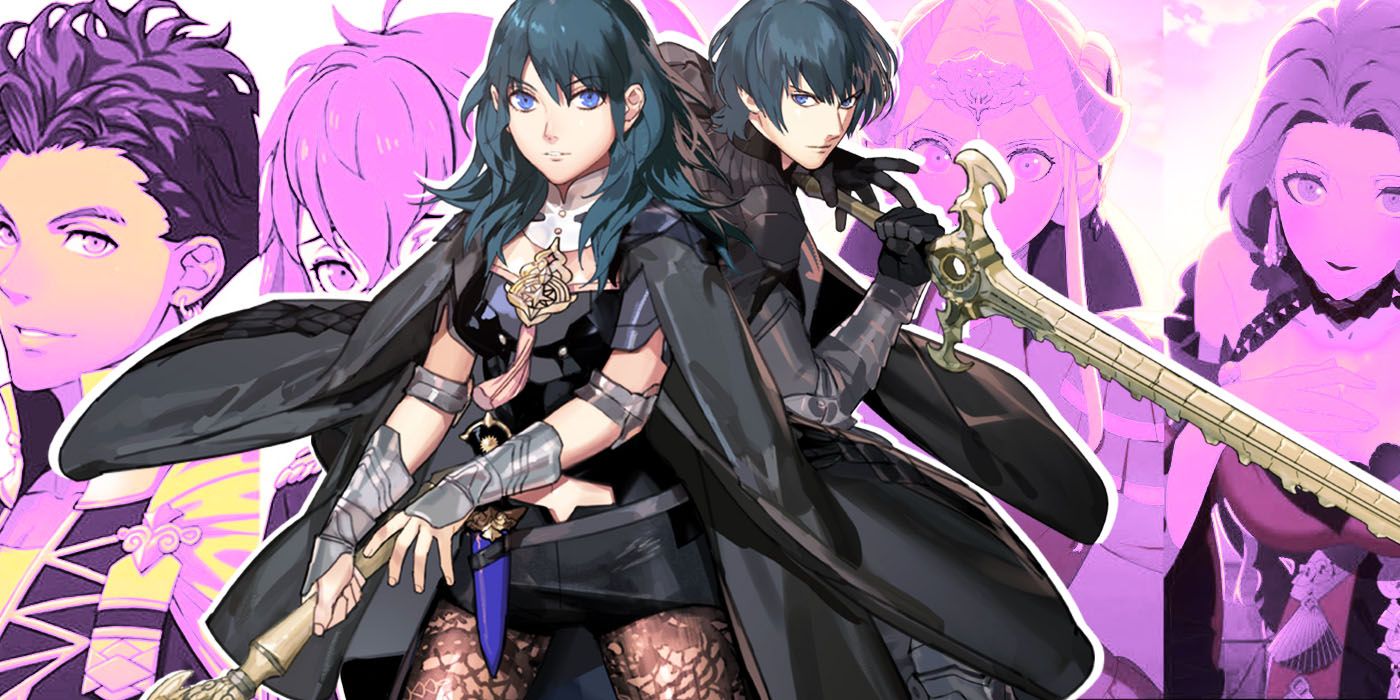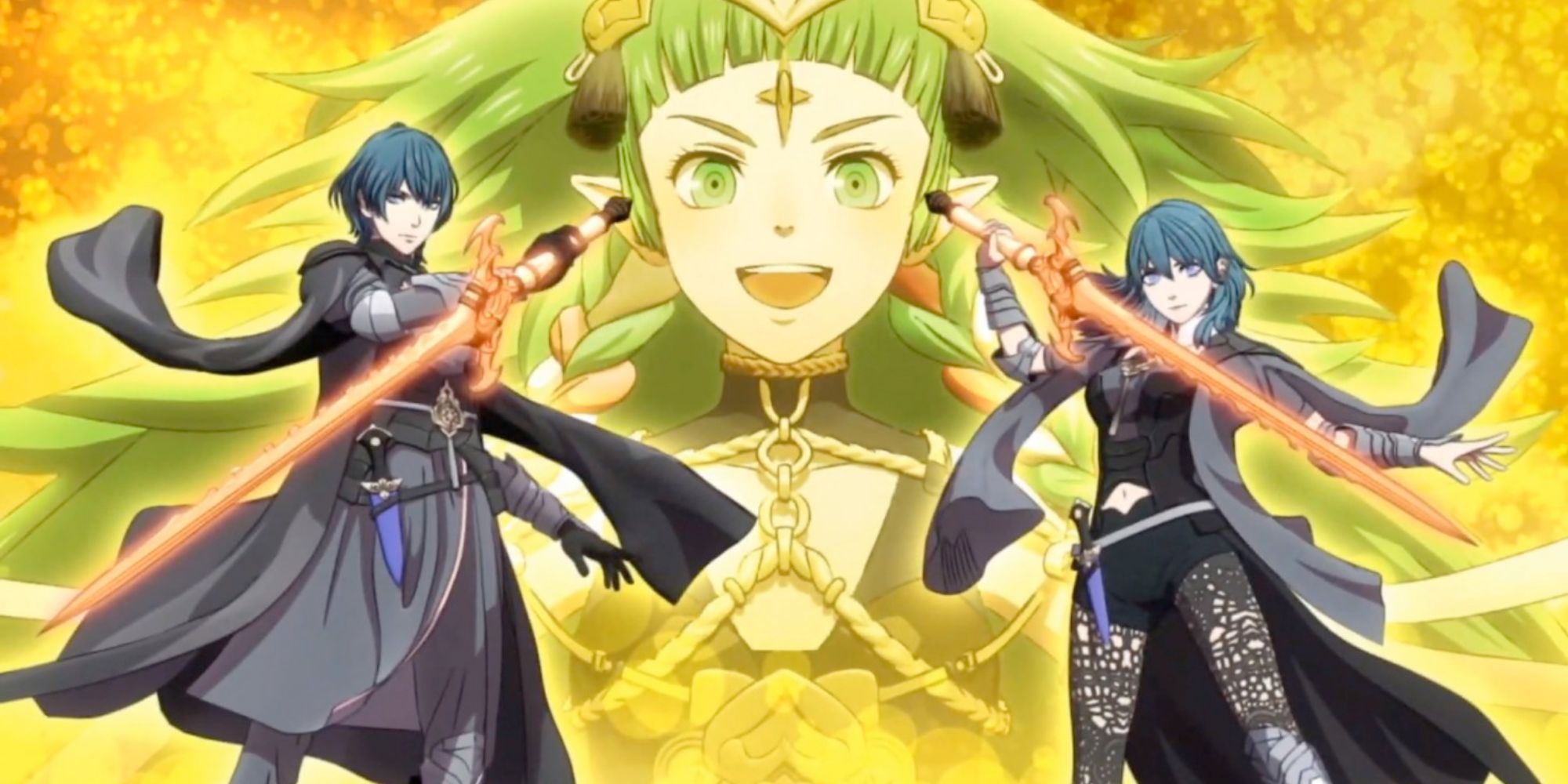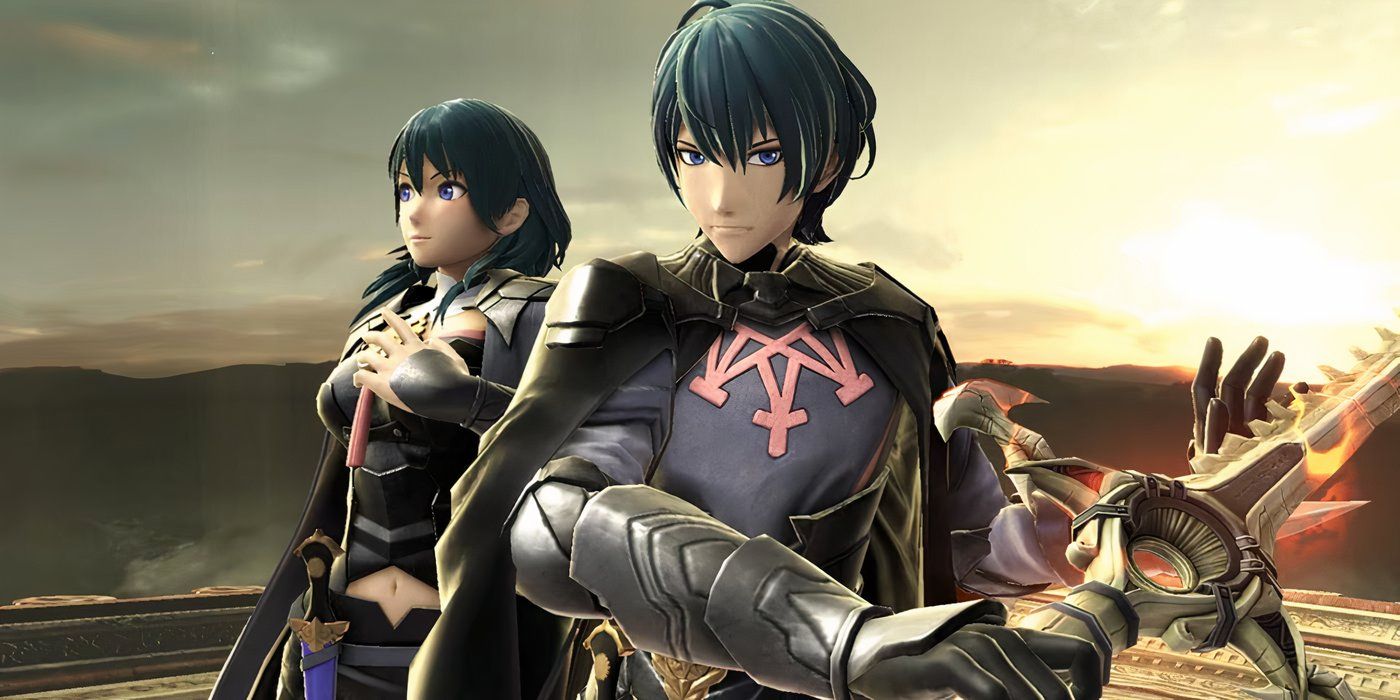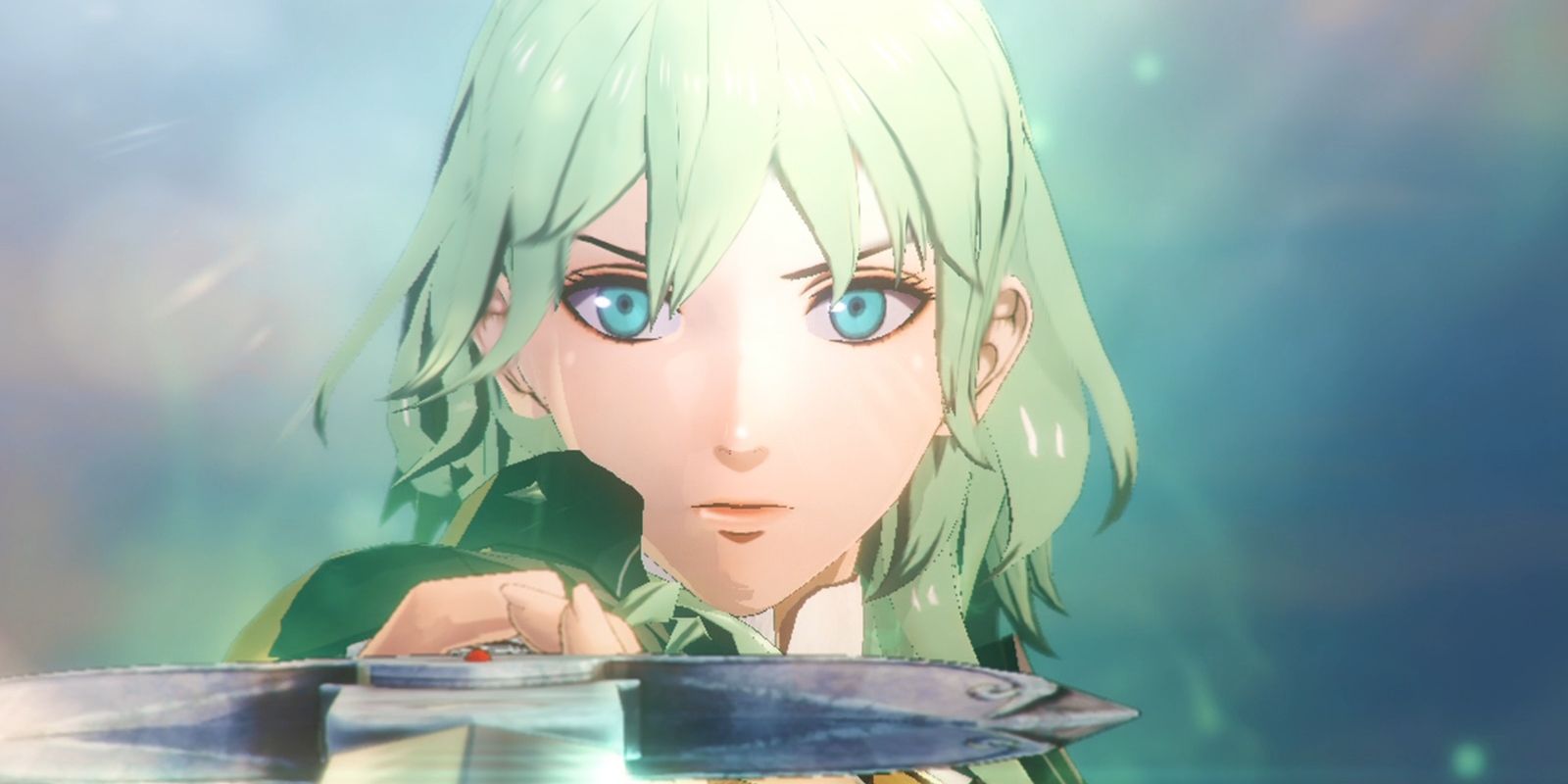
The debate surrounding Player Avatars in the fanbase has been ongoing since the launch of Awakening. However, this concept has actually been a part of the Fire Emblem series for quite some time now. The series first incorporated a character designed to represent the player in Fire Emblem: The Blazing Blade, which was also the initial game from the series that was released internationally.
In the world of Fire Emblem, the concept of a main playable character with a name has become almost synonymous with the series. It’s highly improbable this feature will be eliminated except perhaps in a remake of an earlier game. To date, eight characters have held this role, making it interesting to reflect on which ones were executed well and which could benefit from improvements.
Byleth Takes More Than They Add in Fire Emblem: Three Houses



As a gamer stepping into the shoes of Byleth from Fire Emblem: Three Houses, I can’t help but notice that this character is remarkably quiet compared to others in the series. While some silent protagonists have unique personalities that make them stand out, Byleth feels more like an empty canvas. Occasionally, characters will comment on subtle changes in expression or demeanor, yet these small gestures don’t fill the void left by Byleth’s silence. Instead, they seem to act as a narrative vacuum, shaping the world and characters around them without any discernible reason.
It’s not logical for individuals such as Sylvain to turn against their lifelong friends and homeland just because a teacher they knew briefly was an excellent speaker. If recruitment were determined by shared experiences, stronger bonds, or even similar values, these decisions might hold more significance. However, the issue is that none of it originates from the characters’ moral principles. Instead, Edelgard, Claude, and Dimitri gain or lose followers not through persuasion or ideology but rather due to the influence of Byleth, regardless of storyline consistency.
In Fire Emblem: Three Houses, Edelgard’s character is significantly impacted by Byleth, making her appear weaker than she truly is. While Edelgard’s backstory, traumas, and desire to reform a corrupt system are deeply explored, she is often depicted as easily swayed because of the kindness shown by a teacher from another house. This contrasts sharply with the depth of her character arc, suggesting that her resolve hinges on someone she barely knows, which seems unrealistic. However, there are moments where Byleth appears intriguing, but these instances are overshadowed by how they simplify the game’s world. It could be argued that Fire Emblem: Three Houses would have been a more powerful game if it had a different main character.
Kiran Is Silly And Not Much Else
In the context that Fire Emblem Heroes is a spin-off mobile game with a gacha system, it’s understandable that its characters might have less depth compared to those in the main series due to their lack of fully fleshed out stories. However, despite this expectation, Kiran stands out as being especially underdeveloped. At the start, players couldn’t customize Kiran’s appearance, which is unusual considering the character receives a lot of focus. Although a damsel-in-distress role can be intriguing, a large portion of Kiran’s actions appear to serve more as fanservice rather than contributing significantly to the narrative.
The most straightforward rephrasing would be:
In Book VII, Seiðr instructs Kiran to produce a child with her, which is later unexplored and ignored in the storyline. This ambiguity surrounding Heiðr’s identity leaves it uncertain whether she is Kiran’s daughter, as there’s no significant response to her demise. Book IV momentarily granted Kiran a voice, enhancing the character’s presence, but this level of development has yet to recur. On the other hand, the narrative consistently portrays Kiran as a good-intentioned but somewhat dimwitted character, a depiction that is amusing, though not necessarily in line with canonical interpretations.
Mark Is an Interesting Character in The Blazing Blade, But Bare Bones
In essence, Mark represents Fire Emblem’s initial endeavor in creating an avatar character, which explains why he appears less fleshed out compared to other characters. Mark is initially a wounded tactician whom Lyn encounters and helps recover. Once healed, he accompanies her on her journey. On the battlefield, he remains unseen, represented only by a standard NPC icon. However, his impact on gameplay is significant through a distinct Tactician Rank system, which impacts the final text based on performance, ranging from commendations to criticisms.
In the game, Mark remains silent, yet numerous characters engage with them. These characters are close enough to Eliwood and Hector for the possibility of serving as Roy or Lilina’s godparent. A player character that doesn’t battle directly but rather supports from behind the scenes is an intriguing idea, but the lack of character development is noticeable in a game brimming with detailed characters. It would be captivating to witness the series re-explore this format, preferably with a more developed character who interacts more extensively with other characters within the story.
Shez Didn’t Fully Live Up to Their Potential
In the game Fire Emblem Warriors: Three Hopes, introducing Shez as the playable character was shrewd, as it offered players an opportunity to view their previous self-insert, Byleth, from an external point of view. What makes things intriguing is that Shez, despite being a poorer performer in their job compared to Byleth, manages to save Monica – something Byleth accomplished without hesitation but failed to do so when it came to killing Kostas. These subtle differences pave the way for more dramatic narrative twists than many initially anticipated from the prologue alone. The absence of Byleth, who was crucial in Three Houses, presented a significant opportunity.
To put it simply, while Three Hopes features an entertaining character in Shez, there’s a sense that their role in the story could have been more clearly defined. Their casual, witty personality is enjoyable, and moments like teaching Edelgard how to high-five or contemplating the aimless life of a mercenary add depth to their character. Shez also provides an interesting contrast to Byleth, who always appeared calm and controlled. However, the backstory of Arval seems underdeveloped, leaving many questions unanswered about its origins. This lack of detail is noticeable when compared to the rich lore found in Three Houses. Despite these shortcomings, Shez may have the most well-rounded personality of any in-game character thus far, and their distinctive design manages to be endearing in its own unique way.
Kris Is Where Players’ Choices Matter
Among Fire Emblem characters, what sets Kris apart is the flexibility given to players in tailoring various attributes of this character. This customization extends to hair style, facial features, class, and even aspects of personality, which in turn influences how other characters interact with Kris. Additionally, players can pick a backstory for Kris, adding depth to their origin beyond mere introduction. However, it’s important to note that this detailed character customization is only available within the remake of Mystery of the Emblem, titled New Mystery of the Emblem for DS. Since Kris was not initially part of the original game, many differences based on appearance or gender are reduced to superficial text changes.
Although it’s sometimes evident that Kris was added to an existing storyline, the prologue and their connection with Katarina provide a solid base to explore what this sort of character might be capable of. The allure comes from how minor decisions impact personality and relationships, not through significant plot twists, but subtle interactions. This is more a testament to the execution than Kris as a character, but in terms of serving as a genuine player avatar, they bring something novel that other installments haven’t equaled yet.
Corrin’s Between a Rock and a Hard Place
In a challenging predicament, Corrin finds themselves smack dab in one of the most heated custody disputes ever recorded. Given the circumstances, it’s understandable that they may seem somewhat imperfect. Regardless of the decision made, someone significant to them becomes an adversary, and their resilience under such pressure is commendable. At heart, Corrin possesses the solid base for a captivating character: kind-hearted, hopeful, and sheltered due to their background. At times, their innocence can lead to complications; however, those around them frequently offer aid, strengthening their bonds.
In Fates, the various paths delve into how Corrin adheres to their beliefs despite drastically different scenarios. While intriguing, a more engaging experience could be achieved if players had greater control in molding Corrin’s character beyond the initial path selection. The game leans heavily towards world-building and lore, leaving little space for extensive character development. Unfortunately, Corrin’s emotional spectrum is quite narrow, as they rarely exhibit anger or frustration, even when such reactions would be fitting. Yet, Corrin remains an engaging character due to their enjoyable supports. However, their removal from the story could significantly alter its essence.
Alear’s Fear of the Corrupted Makes Them More Memorable
The initial instance in the game Fire Emblem Engage where Alear distinguishes themselves as an Avatar occurs in one of the early cutscenes, when the party is ambushed by the Corrupted. Contrary to what Vander assumes, they wish to flee rather than fight. Fear of the Corrupted isn’t a common theme in the gameplay for Alear, but it is subtly addressed in certain supports and the narrative, making it intriguing. Most player characters are often portrayed as noble and honorable figures who uphold righteousness. However, Alear’s fear is a relatable and personal trait that stands out. This immediate apprehension sets the stage for their later unease with being revered as the Divine Dragon.
As players uncover the story, they’ll discover that Alear’s persistent dread stems from a harrowing past: witnessing numerous siblings being torn apart by the Corrupted, they feel compelled to prove their worth and avoid being labeled “defective” themselves. This fear is deeply rooted in Alear’s traumatic childhood. The notion that their supposedly evil nature isn’t due to possession or loss of control, but rather a product of being raised as a weapon under an abusive father, offers a compelling narrative arc. It’s plausible that Alear’s amnesia could be the result of repressing painful memories following a near-fatal encounter with their father, rather than any sinister plot.
Robin Balances the Scales Perfectly in Fire Emblem Awakening
It would be beneficial for more games to feature Avatars as secondary characters similar to Robin in “Fire Emblem Awakening”. This arrangement allows the game to avoid issues with the Avatar being underdeveloped or disruptive to the plot, since there’s another significant character handling a large portion of the storyline, world-building, and character development. This setup also emphasizes the relationship between Chrom and Robin, making it more engaging than if the focus were solely on Robin with everyone else being optional. Initially, it’s Chrom who is experiencing hardships in the first act, and his story remains central until halfway through Act II. This dynamic adds depth to the gameplay experience.
Regardless of whether Robin takes center stage, Chrom remains by their side throughout the story, and his response to Robin’s critical decision is essential. Although Robin’s personal ties with Validar and Grima might benefit from further exploration if they weren’t bound as an Avatar, the battle against predestined fate resonates with many players because few things are more frustrating for gamers than being forced to follow a game’s script. By offering the choice between focusing on Chrom when uninterested in Robin, and centering the narrative around a tangible relationship development rather than past or one-sided relationships with an Avatar that lack substance, the game allows players to engage more deeply with both characters.
Read More
- Clash Royale Best Boss Bandit Champion decks
- Clash Royale December 2025: Events, Challenges, Tournaments, and Rewards
- Clash Royale Witch Evolution best decks guide
- Mobile Legends December 2025 Leaks: Upcoming new skins, heroes, events and more
- Clash Royale Furnace Evolution best decks guide
- Mobile Legends X SpongeBob Collab Skins: All MLBB skins, prices and availability
- Football Manager 26 marks a historic FIFA partnership ahead of its November launch
- The Most Underrated ’90s Game Has the Best Gameplay in Video Game History
- JoJo’s Bizarre Adventure: Ora Ora Overdrive unites iconic characters in a sim RPG, launching on mobile this fall
- Mobile Legends November 2025 Leaks: Upcoming new heroes, skins, events and more
2025-05-18 04:14